Boyd's photo diary. |
|
|
|
|
|
Feb22 |
|
. |
Mon 28 Feb 2022
|
|
|
|
|
My first visit to the new Bolton Bus Station. |
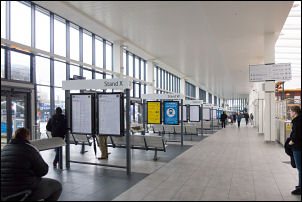
Bus Station interior. |

Bus Station interior.
|
|
|
|
Sun 27 Feb 2022
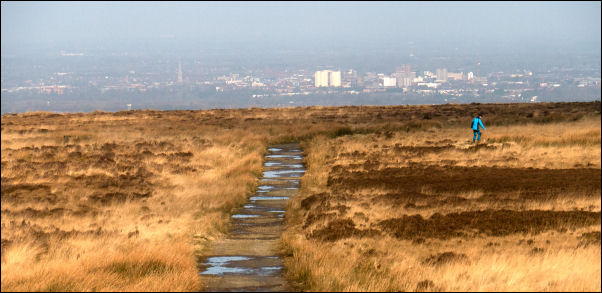 |
|
Walking home from my camp. In the distance is Preston. |
|
|
|
Sat 26 Feb 2022
 |
|
|
A late birthday camp on the moors above White Coppice. My
meal was partly presents I'd been given at Christmas. It was
very windy overnight so glad I was in my Hilleberg Soulo tent. |
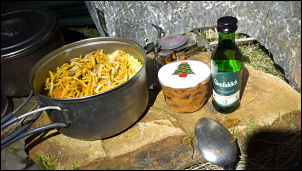
|
|
|
|
Mon 21 Feb 2022
I recently digitised some old ˝ plate (6.5*4.75in) glass
negatives that were taken in 1912 of the construction of Brushes
Water Filter House near Stalybridge. Thanks to the internet,
Facebook and employees of United Utilities it was possible to
find out the story of the building. |

Buckton Castle Water Treatment Works near Stalybridge. |
|
|

Brushes Filter House under construction in 1912.
The Kent
meter panel can be seen in the centre distance. |
After about 75 years of use it was demolished as a new
treatment plant was built elsewhere. I was delighted to hear
that the original Kent Instrument panel to monitor and record
the water flows was saved and moved to Buckton Castle Water
Treatment Works above Stalybridge. |

Kent meters in 1912. |

Chris at the Buckton Castle Water Treatment Works above
Stalybridge and the Kent Meter Panel. |

One of the Kent Venturi gauges. |

The original clock. |
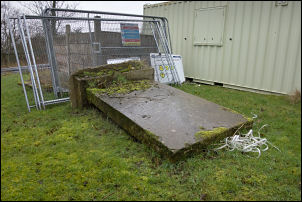
The Brushes Filter House plaque is preserved in the compound
but face down. To the right is the Ashway Gap stone. |

Ashway Gap Filter House. |
|
Sat 19 Feb 2022
|
|
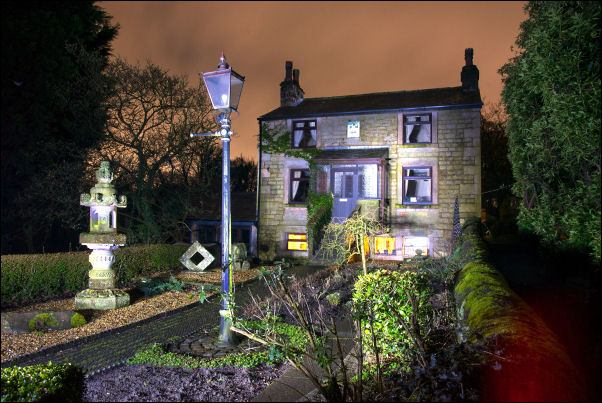 |
|
A night viewe of Frank's house on Hill Top Lane using my bike
lamp for illumination. |
|
Fri 18 Feb 2022
|
Big thanks to Byron for the heads up on the Audio-Technica
AT-LP120XBT Deck with USB. I decided to invest as a late
birthday present to me. The usual dealers didn't have the deck
but they came into the RicherSounds warehouse yesterday and they
shipped one to the Preston store today, which I collected this
afternoon. |
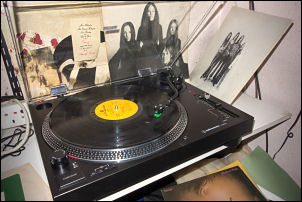
Audio-Technica AT-LP120XBT Deck.
|
|
|
|
|
|
The diversion path by the cricket field Whittle-le-Woods has
deteriorated considerably since the funnelling fence has been
fixed |
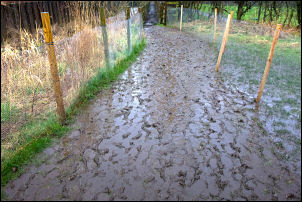
Path by the Cricket field. |
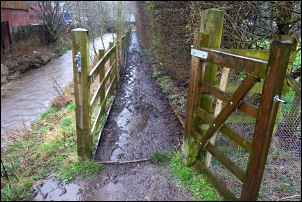
The path gets worse.
|
|
|
|
Wed 09 Feb 2022
|
|
John Osbaldeston (1780-1862).
One of my
favourite cycling routes is through Tockholes and on to the
Belmont Road. Down Rock Lane is St Stephen’s Church and I
decided to call in to say hello to one of our long lost and
mostly forgotten inventors. The grave of John Osbaldeston lies
at the the furthest end of the graveyard and at one time was
visited regularly by people paying their respects. Judging by
the untramples undergrowth and almost illegible epitaph the
visitors have dried up.
He was born at Snig Brook (Near
Revidge), Blackburn about 1777 and after some schooling he began
work as a handloom weaver. He saw the power loom drive out the
hand loom and the factory replace the cottage loom shop and it
was this evolution which turned his active and inventive mind
towards the problems of speeding up the various processes of
cotton manufacture in the factories. He worked long hours and
spent his spare cash working on his inventions, the most famous
one being the Weft Fork.
There was already an alarm system to
warn the operators when the downward warp thread snapped but no
way of detecting a break in the weft that went across the
fabric. Osbaldeston invented the weft fork and the loom was
stopped when a break was detected. It meant one minder could
look after four looms instead of just one.
This invention
should have made him a fortune but instead of putting a patent
on it he shared the invention with friends in the pub. When a
patent was issued in 1841 it did not have his name on it but one
of his so-called friends. Grace's Guide to British Industrial
History states that James Bullough, a Blackburn textile
machinery manufacturer, registered the patent in 1841.
John
Osbaldeston made no money from his invention and died penniless
in Blackburn Workhouse in 1861. He was spared from a pauper’s
grave by the kindness of the Vicar of Tockholes. It was 30 years
later when the monument was erected and simply read:
“John
Osbaldeston, inventor of the weft fork, 1780-1862.”
|
John had already written his own epitaph but it was
never used. It was:
“Here lies John Osbaldeston. A humble
inventor, who raised many to wealth and fortune but himself
lived in poverty and died in obscurity. The dupe of false
friends and misplaced confidence.”
I wonder if anyone knows
where James Bullough is buried, or even cares?
John’s
inscription is now very faint but I have included a photo from
2009 when it was much clearer. |
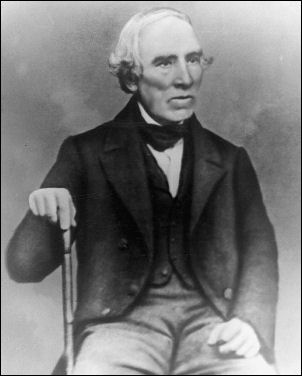
The only known image
of John Osbaldeston.
From Blackburn
Library via
the Cottontown
website. |
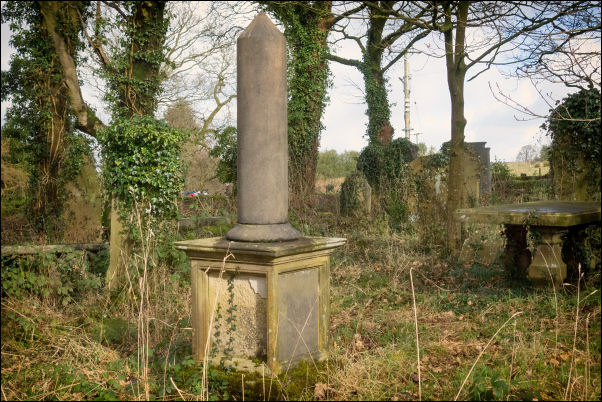
The grave of John Osbaldeston (1780-1862), St Stephen’s Church,
Tockholes. |

Inscription Feb 2022. |

Inscription June 2009. |
|
|

Replacement of the gas supply pipes continue. |
|
|
|
Fri 04 Feb 2022
A rainy afternoon walk to Denham Springs to the site of the
Old Print Works and the remaining Chimney. |
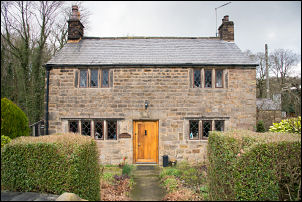
Lower Copthurst Farm |
|
|

Denham Springs Old Print Works Chimney from the Leeds &
Liverpool Canal. |
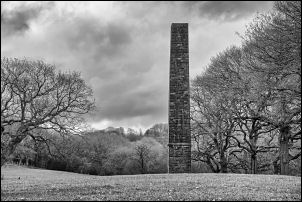
The Chimney viewed from the Birchin Lane side (west) |
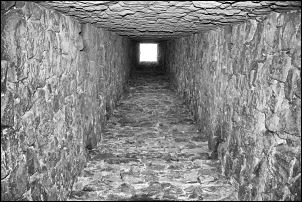
View up the chimney. |

Lintel for the flue. |
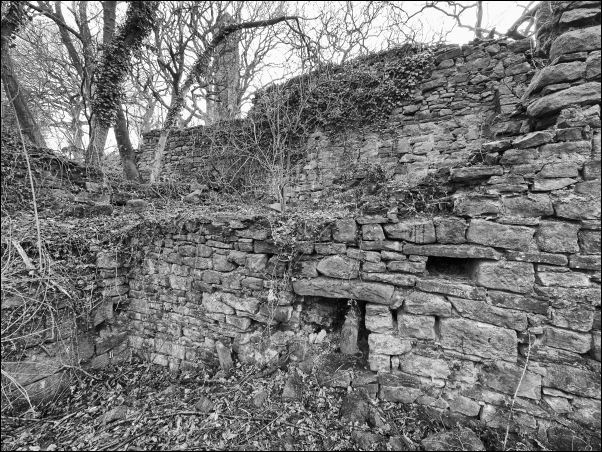
All that's left of the print Mill below the chimney. |
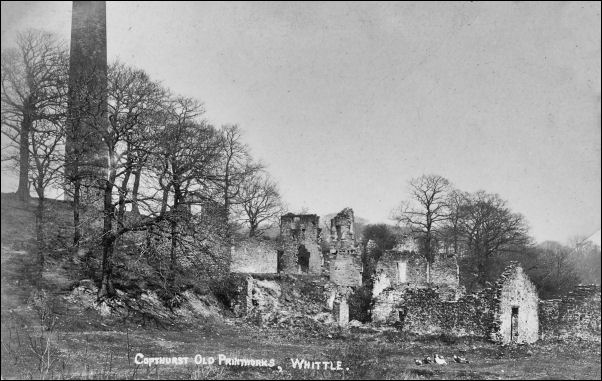
An old view of the ruins. |
|
Walking along the Leeds & Liverpool Canal from Town Lane to the
Top Lock it is possible to see a stone chimney emerging from the
trees in the valley to the left. Along it runs the River Lostock
and this was the original power source and water supply for the
long abandoned Denham Springs Print Works. A few piles of stones
and low crumbling walls are all that remain of the buildings but
the chimney still stands majestic above the ruins. The remains
are behind the private buildings of Denham Springs Farm and not
accessible. However, the chimney can be seen from many vantage
points and marks the location of a troubled industry over 200
years ago. The first accurate map of the works is the 6in/1mile
Ordnance Survey map of 1848 which shows substantial buildings,
the chimney and reservoir. The next map is the 25in/1 mile O.S.
Map of 1894. This is much more detailed and calls it the Denham
Springs Old Print Works. |

Chemistry of Calico Printing.
And Printworks. |
By this time the mill had closed and the buildings were in a
ruinous state.
In the 1840s John Graham wrote the “Chemistry
of Calico Printing 1790-1835 and History of Printworks in the
Manchester District 1760-1846”. This astonishing document
consists of 470 handwritten pages covering many recipes for dyes
and also details of Printworks in the area. We are fortunate
that Denham Springs is included.
The mill began printing
around 1783 and was run by Bennett and Ware. Bennett died and
Ware left and the mill remained empty. A man called Dickinson
eventually tried again but he also went bankrupt leaving the
mill empty once more. The last named manager was Charles Barber
who ran the mill with two machines, 20 tables and a 24
horsepower steam engine. He didn't last long and went bust in
1845.
Graham goes on to say: “It appears strange that men
could be induced to carry on these old premises for 50 or 60
years being a great way from market, not capable of extension
and always unprofitable with only a few small buildings and very
little water and altogether appears a very unlikely place for
carrying on the printing business successfully.”
The chimney
remains around 10m above the valley bottom and 22m (72ft) tall.
Where higher ground was available it was common for chimneys to
be built above the mill with a connecting flue. This effectively
increased height to discharge and gave better drafting of the
gases. Flues up hillsides were usually stone built tunnels but
the one for Denham Springs cannot be found and probably
collapsed without trace over a hundred years ago.
The River
Lostock supplied and powered three Printworks in the area.
Denham Springs (in Brindle) was the first. Then Low Mill
(Whittle-le-Woods) and lastly Lower Kem Mill (Clayton-le-Woods). |
|
Thu 03 Feb 2022
|
The Gas company is currently renewing the gas mains. Mostly by
threading new polyethylene pipes into the old cast iron. The
reinstatement at the top of School Brow looks rather good. |
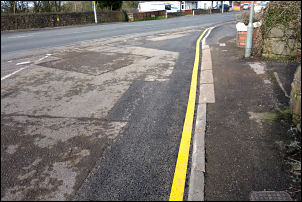
Today |

27th Jan 2022. |
|
|
|
Tue 01 Feb 2022
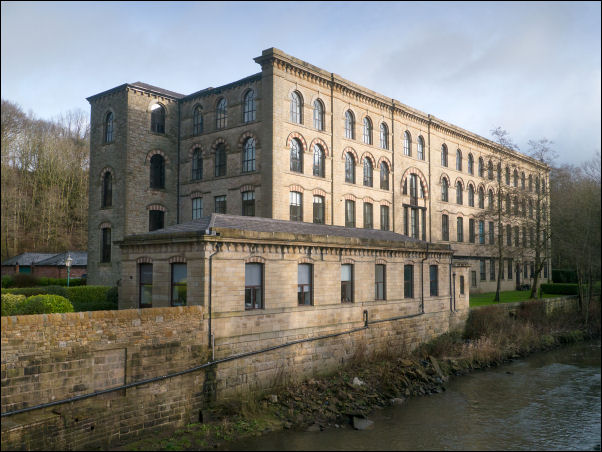 |
|
The converted Brookbottoms Mill near Ramsbottom |
|
|
|
|
|